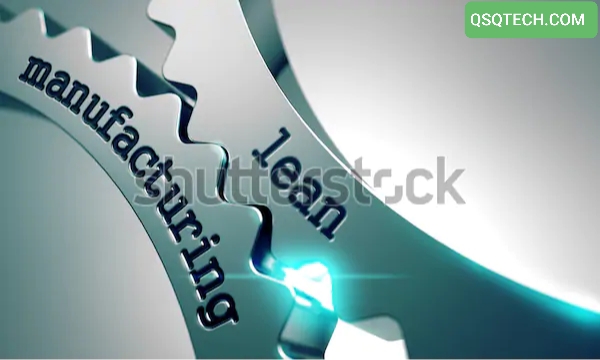LEAN MANUFACTURING TOOLS:
Hello friends,
Today, We'll discuss on some important Lean manufacturing tools.
Lets start discussion on this topic. Hopefully, you'll understand this topic.
First of all, thanks for visiting.
First of all, thanks for visiting.
LEAN MANUFACTURING:
Lean manufacturing is a manufacturing strategy in which improving the value added activities, and identifies non-value added activities and tries to eliminate it. Some tools are used for this.We will mention some of the important tools here.
1. WHAT IS 5S?
The following five things are manily mentioned in this tool, which fulfill this 5S word.
1S: Sorting
2S: Set in order
3S: Shine
4S: Standardize
5S: Sustain
2. KAIZEN:
Kaizen is a Japanese word for "Improvement".
KAI means "change" or
ZEN means "good".
Kaizen is a way of workplace management brings to small incremental changes made for improve productivity and minimizing wastage.
Kaizen refers to activities that brings continuously improve in all functions.
Masaaki is known as the developer of Imai kaizen.
3. 3M (MUDA, MURA, MURI):
TAICHI OHNO is founder of Toyota Production System.
He defined the 7 types of muda.
He says that, all we are doing is looking at timeline from the moment of customer gives us an order to the point, when we collect the cash,and we are reducing that timeline by removing the non value added wastage.
Originally, Toyota Production System was called "Just In Time” production system which is popularly known as a lean manufacturing process.
He defined the 7 types of muda.
He says that, all we are doing is looking at timeline from the moment of customer gives us an order to the point, when we collect the cash,and we are reducing that timeline by removing the non value added wastage.
Originally, Toyota Production System was called "Just In Time” production system which is popularly known as a lean manufacturing process.
TYPES OF WASTE:
There are 3 types of waste.- MUDA
- MURA
- MURI
1. MUDA:
It is a Japanese term that means waste. Any activity that doesn't add value. It only consumes time & cost.
There are two types of MUDA.
TYPE-1 MUDA: It includes non-value added activities in the processes that are necessary for the end customer. As a result, it can be minimized. E.g. — Inspection.
TYPE-2 MUDA: It includes non-value added activities in the processes that are unnecessary for the customer. As a result, it should be eliminated.
E.g. — Rework.
TYPES OF ACTIVITIES:
There are two types of activities.
- Value added activity
- Non value added activity
1. Value added activity:
This is the activity that transfers the product in such a form for which the customer pays us.
2. Non-value added activity:
This is an activity that doesn't add any value to the product and the customer doesn't pay for it either.
We do value added activity 10% and non-value added activity we do 90%.
Non-value added activity is of two types.
- Necessary waste
- Pure waste
1. Necessary waste:
This is the activity that is necessary to run a business but can minimize it. Such as, inspection which doesn't add value but is necessary to prevent defect outflow from our end to customer, and it also maintains quality.
2. Pure waste:
This is an activity that only consumes resources but doesn't add any value to the product. It is not needed by the organization nor does the customer pay for it. Such activities should be eliminated. Like- Inventory, wait time, rework, excess check.
7+1 FORMS OF MUDA:
- Defect
- Overproduction
- Waiting
- Non-utilized talent (New)
- Transportation
- Inventory
- Motion
- Extra processing
In all these form of muda, Non utilized talent is that was later develop. It is developed by Toyota Production System (TPS).
1. Waste of Defect/Repair/Reject:
Rejection or scrap generated for not being able to produce a quality product in the first place is called a defect. Due to the production of scrap, the material which is scrap, is checked, rework or segregation and repair. The cost is fixed. it is called waste of defect.
2. Waste of overproduction:
Creating a product excessively or prerequisite and without the need of the customer is called overproduction. Overproduction is the worst waste of everyone else.
3. Waste of waiting:
Waiting of the operator due to delay between an operation or the machine being stuck for some reason or the machine being busy, is called waiting.
4. Waste of non-utilized talent:
The company's most important resources are its own employees. Not being able to use the right time and talent of its employees is waste of non-utilized talent. For example- Putting technician in paperwork. Problem solving only by the experts. Do not include everyone in suggestions and improvements.
5. Waste of tranportation:
Any unnecessary movement of material, people, information, or supplies between process that is not required for 'just in time' production service. It also creates an opportunity for damage to occur.
For example- Transportation of cheaper component from one country to another.
6. Waste of inventory:
Excess parts, materials or work in process that is not being used.
7. Waste of motion:
Any motion of people or machine that does not add value to the product or process.
8. Waste of extra processing:
Over processing is putting more into the merchandise than is valued by the customer.
Unlevel workloads on people & machine.
2. MURA :
It means unevenness, uniformity & irregularity.
Any activity that does not add value.Unlevel workloads on people & machine.
3. MURI :
It is the Japanese term for overburden.
It means strenuous conditions for both workers and equipment as well as for the work process.4. JUST IN TIME:
It is an inventory management system which is used to manage the stock that is kept.
It involves receiving good from the suppliers as and when required and rather than carrying a large inventory at once. Companies used this inventory strategy to increase efficiency and reduce wastage, so that the manufacturing process could only receive goods as needed which reduce inventory cost. This method requires procedure of focus demand accurately.
This strategy is also called Toyota Production System (TPS) because it was developed by Toyota in Japan. This strategy was first used by Toyota in 1970s and it gave them good results in manufacturing journey.
Just In Time (JIT) is also known by different name in different companies:
- Lean Manufacturing
- Just In Time
- Toyota Production System
- Lean Production
- Synchronous Manufacturing.
ADVANTAGES OF JUST IN TIME (JIT):
- Less space needed
- Reduce inventory
- Reduce wastage
- Smaller investment
- Healthy cash flow
- Involve both supplier and customer to eliminate non value added activity.
- Improve quality and productivity.
DISADVANTAGES:
- Risk of running out of stock
- Lack of control over time frame
- More planning required
- Little room for mistake
The aim of JIT strategy us to eliminate the wastage and continuous improvement in productivity.
JIT (Just In Time) can't be implemented without eliminating or reducing seven deadly wastes from the manufacturing process. So in order to apply JIT, seven deadly wastes have to be eliminated from the process.
On seven wastes, in the previous concept 3M (Muda, Mura, Muri) was discussed as seven types of Muda.
You can read this concept by clicking the link above.
7 TYPES OF WASTES:
- Defect
- Overproduction
- Waiting
- Non-utilized talent (New)
- Transportation
- Inventory
- Motion
- Extra processing
5. ROOT CAUSE ANALYSIS (RCA):
Root cause analysis is the fundamental breakdown or failure of a process which, when resolved, prevents from recurrence of a problem.
For a particular product problem, Root cause is the factor that, when you fix it, the problem goes away and not come back.
For a particular product problem, Root cause is the factor that, when you fix it, the problem goes away and not come back.
Root cause analysis is a systematic approach to get the true root causes of our process problem.
WHY DETERMINE THE ROOT CAUSE?
- To prevent problem from recurring.
- To reduce possible injury to personal.
- To reduce rework and scrap.
- Increase competitiveness
- Promote happy customer and stack holders.
- Ultimately, reduce cost and save money.
6. POKA YOKE:
Poka-yoke is also called a mistake proofing element.
Poka yoke is a system which prevents the mistakes from happening or if mistakes are happen and immediately catches and after that we correct it.
Mistake proofing (Poka-Yoke) is the activity of awareness, detection, and prevention of mistake which adversely affect :-
Prevention is the best other than.
2. You can't remove the opportunity for error, then,
Poka yoke is a system which prevents the mistakes from happening or if mistakes are happen and immediately catches and after that we correct it.
Mistake proofing (Poka-Yoke) is the activity of awareness, detection, and prevention of mistake which adversely affect :-
- Our customers & consumers (Defects)
- Our employees (injuries)
And result is zero.
AWARENESS:
Awareness means knowing about allow the mistakes to our process owner and associates of shop floor. We will make our process or product design such be prepare so that we can prevent or detect the defects easily.DETECTION:
Detection means we allowing the mistakes. We are not preventing it, but we install a system that if mistakes are allowing then we catch & detect them and stop them before reaching customer.PREVENTION:
Prevention means that we will such changes in design so that any mistake cannot be done by mistakenly. Not allowing the chances for the error to occur within the first place.Prevention is the best other than.
OLD WAYS TO PREVENT MISTAKES:
- Reprimand workers
- Give motivational talks to worker (Tell them to pay attention and be more careful)
- Retrain workers
BETTER WAYS TO PREVENT MISTAKES:
- You should remove the opportunity for error
- Improve the process
- Make wrong action more difficult
2. You can't remove the opportunity for error, then,
- Make it easier to discover the error that does occur.
You will understand this hopefully.
Thank you.
Thank you.
Some of related question that help to improve your basic knowledge.









